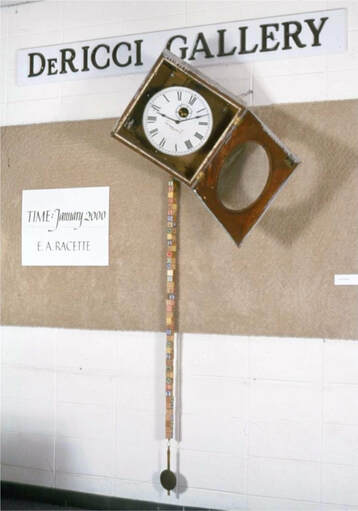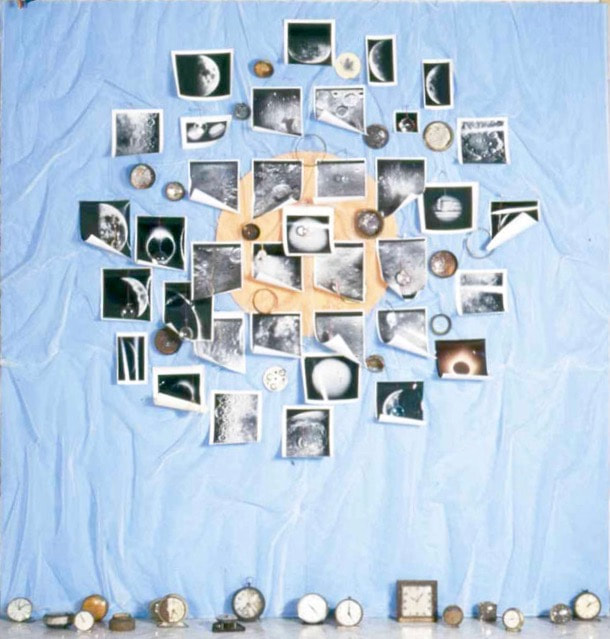Millenium Show
Time is Not Money (detail)
Pendulum of clock made of toy blocks |
Time is not Money
Materials: industrial clock, children's blocks that spell "Time is not Money"
Vicarious Nature
Materials: tractor chains, computer boards, saw, rubber computer exercise squeezers, oil painted landscape screens, plastic animals.
Calendar
Materials: Nasa Ranger moon photographs, Venus and Sun photographs, optical lenses, clock parts, paint, sheer fabric.
|
Some of the People Who Live in My Heart
Materials: Hotwheels tracks, photographs, string
Dimensions: 10' h x 10 ' diameter.
Dimensions: 10' h x 10 ' diameter.
In this exhibit, created in 2000, I explored concepts of time, such as circular, linear, historical time and differing calendar systems. In other times and cultures time has been viewed as circular, connected to daily and yearly rhythms. In classical Greek times many people believed history would repeat itself endlessly. In medieval Europe the world was expected to end at any moment (when Christ was to return). The prominent Renaissance paradigm about time was that the world was decaying. The invention of the mechanical clock helped to disassociate time from natural rhythms. The mechanical clock turned time into an abstract entity which could be precisely and mathematically measured. This enabled the scientific revolution to begin, which was of course followed by the industrial revolution. The measurement and dissection of time has exponentially increased and dramatically affected our lives. We force our minds and bodies into constantly increasing speed. Time is essentially the amount of life that we have to live — it's unfortunate that people live with the adage that time is money.


